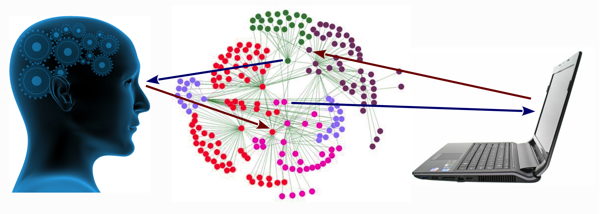David Peebles and Nadia Ali, University of Huddersfield, UK
One way to investigate the complex interactions between cognition, perception, and external representation that occur when people work with data visualisations is to model human performance within a cognitive architecture. Cognitive architectures specify the permanent cognitive structures and processes that underlie intelligent behaviour and are implemented as software systems for developing and testing cognitive models. We outline the features of one cognitive architecture, ACT-R, and describe an ACT-R model of human graph comprehension. We argue that this methodology allows precise, highly constrained, models of human interaction with visualisations which can be used to reveal the cognitive mechanisms and visual diagram features that determine accurate and inaccurate performance.
